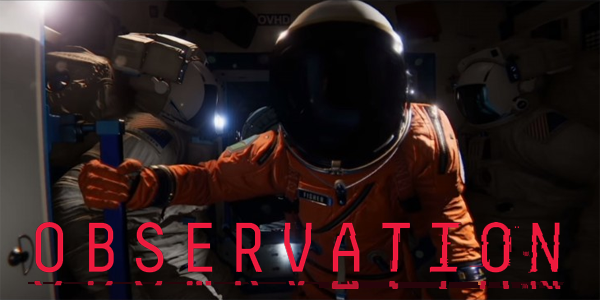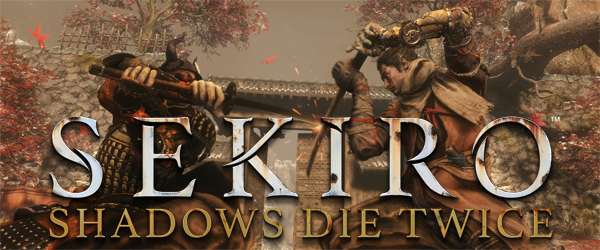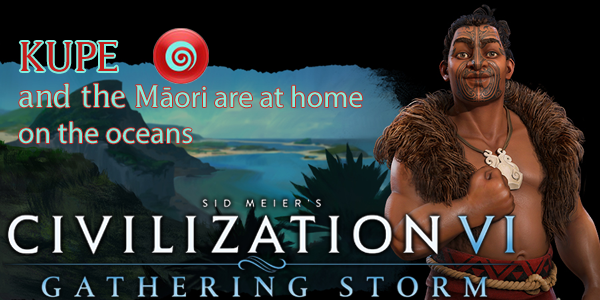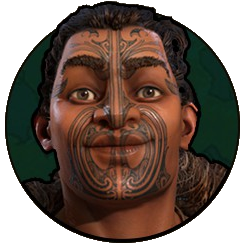At the end of April, our family's beloved cat, Gynx passed away. My father found him lying dead next to the curb outside the house. There were no apparent signs of injury or trauma, so we don't think he was hit by a car. Perhaps he had a heart attack or a stroke? Because nobody was there to witness it, we'll never know for sure.
My sister took it particularly hard. She had just fed him his breakfast 20 or 30 minutes before my dad found him outside. All seemed well. Just another routine morning. My how suddenly things can change...
She was hit hard with grief, and felt responsible. "If only I hadn't let him outside", she said. But it wasn't her fault. She had no way of knowing. He could just as easily have passed inside the house.
Our cat Gynx died this month after 20 happy and loving years.
Yes, I do wish that we could have had some warning. One of my friends once lost an old cat who had become ill. She got to hold her cat and pet him and make him comfortable as he slowly passed and breathed his last breath. If I were a cat, that's how I'd want to go: comfortably resting in the lap of my beloved human. I wish that Gynx could have had that as well.
But as I said, none of us can feel responsible or guilty. We can't have known that his time was coming. He was healthy and active right up till the end. We all worried that someday he'd go outside and we'd never see him again, and over the years, it became harder and harder to let him go. But he loved to be outside, so keeping him locked inside would have just made him miserable and stressed, and probably only accelerated his demise.
A life worth celebrating; not grieving
I've written about the loss of pets before on this blog. Back in 2014, Nipper, a tortoise that I had since I was about 7 or 8 years old died after apparently becoming trapped in her burrow. The following year, I also lost my baby tortoise Koopa to some kind of tragic accident. Like with Gynx, I have little-to-no idea what actually happened, since I wasn't there to witness the event itself. The sudden and tragic loss of those tortoises was gut-wrenching and depressing, and I grieved very hard, and for a very long time.
I was much more prepared for Gynx's death than I was for the deaths of my tortoises Nipper and Koopa.
Though Gynx's death was also sudden, it was not altogether unexpected. Gynx was 20 years old, which is very old for a cat. I had thought cats only lived for 15-ish years, so I had spent the past 5 or 6 years thinking that Gynx's time could come any day now. I didn't expect for him to hit 20! So when his time finally came, I think I was emotionally prepared for it -- had been for a long time, in fact. I knew that phone call from my mom, dad, or sister would be coming eventually, and when it came, I knew what it would be.
... [More]

It's real refreshing to come across a science fiction game that isn't just about shooting aliens with laser guns or blowing up space ships. If you're in the market for a thoughtful, well-presented science fiction experience, then I highly recommend that you check out Observation. If you're also into horror, then even better, because this game definitely has some horror elements as well. They're much more subdued, but this game does do a fantastic job of creating a building sense of tension and intrigue as its over-arching mystery is slowly unfurled.
The gimmick here is that you play as a malfunctioning artificial intelligence on a near-future orbital research station. The game is presented as a sort-of found-footage narrative (think along the lines of the Apollo 18 horror movie) told entirely from the point of view of the on-board A.I. Something goes wrong, the crew are all missing and possibly dead, and you help the sole survivor try to find the remaining crew and piece together what happened to the station. Think along the lines of playing as the HAL 9000 from 2001: A Space Odyssey, or as Kevin Spacey's character in the [fantastic] movie Moon. You do this by jumping between different surveillance cameras (a la Five Nights at Freddy's, but, you know, with ambitions of being more than just a random jump-scare-generator). Through the cameras, you interact with various technology and station systems within your line of sight. You'll occasionally be asked questions or given commands by the surviving astronaut, and you chose how to respond.
You are an unreliable A.I.?
From the start, there's a certain degree of unreliable narrator going on. One of the very first actions that the game asks you to do is verify the identify of the surviving astronaut via her voice print. You are initially told that her voice print does not match, and you're given the option to accept or reject her voice print. If you reject, she'll repeat her authorization code, and you'll be told that it matches this time. Is she not who she seems? Are your own systems providing you with misleading information? Are your systems merely damaged? This creates an immediate sense of distrust. You (the player) don't necessarily trust the survivor, the survivor doesn't necessarily trust you, and you can't even trust your own perception and judgement.
From the start, it's unclear whether you can trust Emma, or whether she can trust you...
This immediately creates a dense atmosphere of intrigue and mystery and sets a level of tension that persists through the entire game.
This atmosphere is helped by the richly-detailed near-future space station that you inhabit. The visuals are immaculately detailed, and the station looks and feels like it could be modeled after the real-life International Space Station. The spaces are tight and claustrophobic. Accessories and stationary are strapped or velcroed to the walls, floors, ceiling, and desk surfaces in order to prevent them from floating off in the zero-gravity environment. Everything is believable.
The game further builds its atmosphere with its immersive U.I.. Every button press, command, and interaction has some in-universe context behind it that helps to keep you in the mind-space of your A.I. character. The U.I. is mostly easy to use, and most actions feel intuitive.
This game hooked me in with its setting and atmosphere, and I just had to keep playing to find out what happened and where this would go!
The space station and U.I. are believable and immersive.
... [More]
409df8bf-36a0-4560-ac9f-e173dd9fc208|0|.0
Tags:Observation, No Code, Devolver Digital, PSN, Epic Games Store, science fiction, horror, mystery, point-and-click, walking simulator, puzzle, indie gaming, camera, found-footage, unreliable narrator, space, astronaut, artificial intelligence, HAL 9000, 2001: a Space Odyssey, Five Nights at Freddy's, Saturn

I never got into Tenchu because the
demos were too hard for younger me.
Oh, boy, was this a tough game to play and review! Frequent readers should probably know that I'm a huge Souls-Borne fan -- to the point of writing strategies and lore analyses. Sekiro is a bit different, however. It's much further divorced from Dark Souls than even Bloodborne was. Despite the lack of "Souls-Borne-ness" of Sekiro, I find it very difficult to put this review in any context other than of a new Souls-Borne release.
Sekiro is, ostensibly, a stealth game. There's more of Tenchu and Metal Gear in Sekiro than of Dark Souls. That's not necessarily a bad thing. I like stealth games just fine. The Metal Gear Solid games rank among one of my favorite game series ever.
I'm not terribly familiar with Tenchu, though. I think I played a demo of a PSX Tenchu game on one of my Official PlayStation Magazine demo discs (back in the day when publishers let players play pre-release demos, for free, instead of expecting us to pay for games long before they're even released, or holding the "open beta" hostage to a pre-order). I never bought the full Tenchu game because the demo was far too hard for my little 13 or 15-year-old gamer skills to handle. This was, of course, long before I started playing more demanding games.
Sekiro is in an awkward juxtaposition between Tenchu-inspired stealth, and Dark Souls-inspired boss fights.
However, there seems to be a certain degree of juxtaposition between Sekiro's desire to be a Tenchu-like stealth game, and its desire to feature demanding boss fights in-line with what is given in Souls-Borne games. In essence, we have two games here: a stealth game about staying out of sight of enemies and picking them off one-by-one; and a melee boss gauntlet in which the stealth isn't applicable at all. The first of those is good enough. The second one is where my problems begin...
My first playthrough of Demon's Souls was spent
cowering behind a shield.
All parry, all the time
You see, this really comes down to play-style. I was never a big parry-er in my Dark Souls-playing days. I parried a lot more in Bloodborne, but a big reason for that was that the guns allowed me to do so from a relatively safe distance. Heck, my first playthrough of Demon's Souls was done as the Royalty class, starting with the mana-regen ring, stabbing out with a winged spear from behind a shield, and using Soul Spear to dispatch any enemies I wasn't comfortable fighting up close. I hardly realized the parry mechanic existed!
Of course, I've grown and matured since 2008, and parrying has become a common element of my play-style. But I've still never been particularly good at it. This is causing me a lot of trouble in Sekiro because Sekiro's combat is all parrying, all the time! The new posture mechanic (which essentially replaces stamina) also means that a single parry isn't good enough to riposte and kill your enemy. You have to parry each strike in flurries of blows. For those coming from Dark Souls, imagine having to fight a hollow undead, and needing to parry every one of its wild slashes before you can riposte, instead of just the first one. That is what Sekiro expects and requires you to do.
Sekiro requires that you parry most attacks.
If you were a master-level parry-er in Dark Souls III, then you'll probably segue right into Sekiro with no problem and wonder what all the fuss is about. But for the rest of us plebs, that isn't going to be so easy.
This game plays much faster, enemies are much more aggressive, and health is in much smaller supply. Almost everything will kill you with two hits, and many grab attacks will drop you from full health to zero. This game leaves you with virtually no margin for error! Yet the mini-bosses and bosses have ridiculously high HP and posture.
... [More]
ecd29173-9c96-446a-944a-ddc20d5687ab|1|5.0
Tags:Sekiro, Sekiro: Shadows Die Twice, From Software, Activision, Hidetaka Miyazaki, Tenchu, Dark Souls, Demon's Souls, Bloodborne, stealth, boss, Japan, shinobi, samurai, mythology, lore, parry, deflect, deathblow, grinding

Civilization VI's second expansion, Gathering Storm recently released and has added a handful of new civilizations and leaders. I am hoping to write a strategy for each of them, but I want to start with the civilizations and leaders who are completely new to the franchise. This time, I'll be writing about one of the more interesting of the new civs and leaders: the Māori, lead by Kupe the Navigator.
Natives of the Polynesian Triangle are some of the most successful sea-faring peoples in the history of the world. Between 1400 BC and 900 BC, they had begun sailing large ocean-going craft called "waka", that enabled them to cross from Taiwan, through the Philipines, and out to the Melanesian and Samoan islands. Over the next two thousand years, they managed to colonize Pacific islands as far as Hawai'i, Easter Island, and New Zealand. Some historians even believe that they made it as far as the coast of South America! Sometime in the 13th or 14th century, settlers from Polynesia sailed west, began colonizing New Zealand, conquered the local tribes, and began to culturally diverge from their Polynesian ancestors to become the Māori.

According to legend, the first Polynesian to arrive in New Zealand is Kupe the Navigator, chief of Hawaiki. Kupe is figure in Māori mythology, but like Gilgamesh, Hiawatha, and others, he is believed to be an actual historic figure. Historians have constructed accounts of Kupe's life that differ from the various oral legends of the Maori and Polynesian peoples. According to legends, Kupe sailed from Hawaiki (the mythological birthplace of the Polynesian people), along with great migration fleets, to colonize New Zealand as far back as antiquity, battling sea demons along the way. According to historians, Kupe probably found New Zealand between 750 AD and 925 AD after his cousin drowned on a fishing trip and Kupe fled across the sea with his cousin's kidnapped wife, only to return to Hawaiki later to convince others to migrate to the newly-discovered lands with him.
DISCLAIMER:
Civilization VI is still a "living game". Strategies for the game (and for specific leaders and civs) may change as Firaxis applies balance patches, introduces new features, or expands the game through further DLC or expansion packs, or as the Civ community discovers new strategies or exploits. As such, the following strategy guide may change from time to time. I will try to keep it up-to-date, and will make notations whenever changes are made. I'll also post links in the official 2K forums and CivFanatics, where I'll also report any changes made. If possible and practical, I will try to retain the original content of the strategy for posterity.
I welcome any feedback or suggestions that readers wish to offer. Feel free to post on the linked forums, or by posting a comment at the bottom of the page.
This guide is up to date as of the release of the Gathering Storm expansion's "Great Works and Trade Update" (April 2019) (ver. 1.0.0.317)
Māori are a sea-faring and environmentalist-focused civilization. They can embark and sail across ocean from the beginning of the game, and they get extra yield from unimproved feature tiles. [More]
561fb1a8-9d2a-4002-b81e-1df2c98f29d0|0|.0
Tags:Sid Meier's Civilization, Civilization VI, Civilization VI: Gathering Storm, Maori, Kupe, mana, Kupe's voyage, marae, toa, pa, fort, ocean, embark, forest, rainforest, harvest, resource, unique building, unique melee unit

I finally got around to playing some games of Fantasy Flight's second edition of the X-Wing Miniatures Game. I had bought the 2.0 core set and the 1.0 conversion kits back in October of last year. I was on the fence about purchasing 2nd edition. The only change that I was really excited about was the new turret rules, which I figured I could easily house-rule into 1st edition. However, I used my girlfriend's teacher discount at Barnes & Noble along with a coupon to get a hefty discount on the 2.0 core set and conversion kits, in the hopes that the game's other changes would also make it worthwhile.
Older ships have new abilities,
and tokens flip to a "spent" backside.
Fantasy Flight took the opportunity to streamline many components and add some ease-of-use features. For example, the maneuver dials are redesigned such that you can see every maneuver that the ship has available without having to rotate the dial. Upgrade cards have large, empty spaces that allow you to slot them underneath their respective pilot's card without covering up important information. Ship bases and maneuver templates have handy guidelines that can be helpful when executing partial maneuvers (due to collisions). And so forth.
Tokens have been broken up into different colors, each of which has a different effect. All green tokens (such as "focus" and "evade") are now buff tokens which are removed at the end of the round (unless a card says otherwise). Orange tokens are de-buffs (such as "disarm") that go away at the end of the round. And red penalty tokens (such as "ion" and "stress") remain in play until a certain condition removes them. Shield tokens now have a back side, which is colored red. This way, you can flip a shield token over when it's spent, but keep it on your ship card in case it ever gets recharged. The new energy and force tokens work the same way.
Better still, many features, concepts, and abilities from later expansions to 1st edition have been back-ported to all ships in 2nd edition. This has certainly increased the value of simple X-Wings, Y-Wings, and many other early 1st edition ships. The titular X-Wings, for example, now have a barrel roll ability on its card and a Talon Roll on its maneuver dial. The Lambda shuttle is one of the most improved ships in second edition, as it now has both a fore and aft-facing firing arc, as well as new "coordinate" and "jam" actions.
I appreciate that expansion ships are sold in smaller, more efficient packaging.
Heck, even the packaging is more streamlined. The massive boxes for 1st edition's large ships (which were full of empty space) have been replaced with smaller plastic bubble-packaging.
... [More]
fcf863f3-cbb8-458e-84ab-83449a8a4d74|3|2.3
Tags:Star Wars, Star Wars: X-Wing, Star Wars: X-Wing 2nd edition, miniatures, miniatures game, board game, Fantasy Flight, Extrebit, squadron builder, app, companion app, squad points, tournament
|

| 12 | | | | | | | 60 | | 11 | | | | | | | 55 | | 10 | | | | | | | 50 | | 09 | | | | | | | 45 | | 08 | | | | | | | 40 | | 07 | | | | | | | 35 | | 06 | | | | | | | 30 | | 05 | | | | | | | 25 | | 04 | | | | | | | 20 | | 03 | | | | | | | 15 | | 02 | | | | | | | 10 | | 01 | | | | | | | 05 |
|